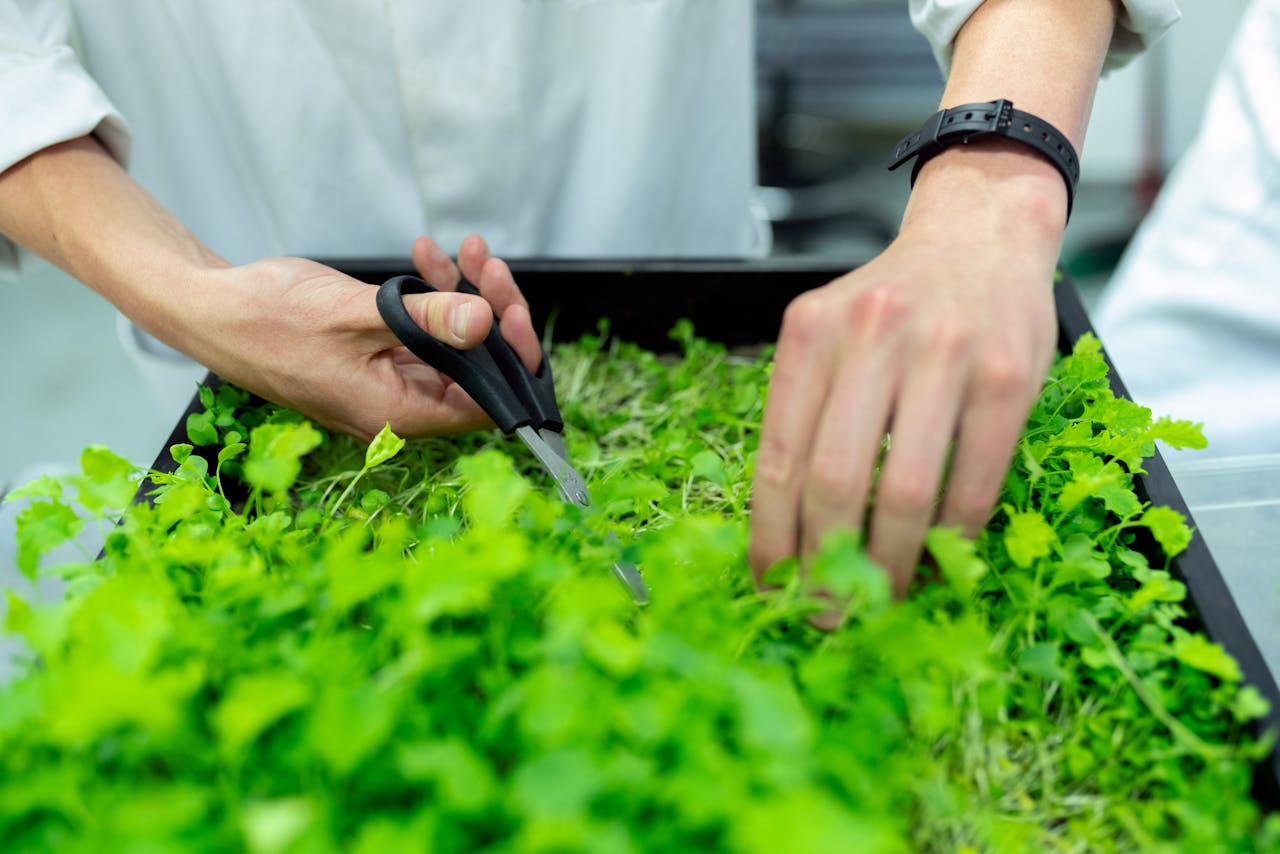In today’s dining culture, herbs have moved from background accents to central elements in the culinary experience. For professionals and trendwatchers, this shift is not merely about flavor—it’s about optics, authenticity, and affordability. Fresh herbs offer restaurants and bars a low-cost yet high-impact tool to differentiate their offerings, create Instagrammable dishes, and communicate regional and authentic values. Guests love the immediacy of seeing herbs freshly cut, sprinkled, or even grown on-site. The herb trend is therefore not just culinary but cultural: a visible, tactile, and shareable symbol of care and creativity. This report explores why herbs have become essential for the next phase of food and beverage innovation.
| Aspect | Details |
|---|---|
| Trend Name | Fresh Herbs in Gastronomy |
| Key Components | Visual impact, affordability, authenticity, regional storytelling |
| Spread | Global—across casual dining, fine dining, mixology, cafés |
| Examples | On-site herb gardens, seasonal garnishes, tableside harvesting |
| Social Media | Instagrammable plating, TikTok micro-greens, green aesthetics |
| Demographics | Younger, experience-driven consumers; urban professionals |
| Wow Factor | Transformative effect with minimal cost |
| Trend Phase | Growth phase, moving mainstream |
Visual Appeal on a Budget
Herbs are proof that small investments can generate big impressions. A scattering of parsley, basil, or coriander turns a simple dish into a colorful, photogenic plate. Social media platforms like Instagram and TikTok thrive on visuals, and vibrant greens consistently perform well. Unlike premium proteins or rare imported ingredients, herbs are inexpensive yet provide high perceived value. The consumer takeaway: the dish looks special, curated, and intentional. For professionals, herbs represent a design tool as much as a culinary one. They offer a low-risk, high-reward means of elevating presentation without increasing menu prices. In a world where the first “taste” is often visual—captured through a smartphone lens—herbs are the easiest way to deliver that wow factor.
From Farm-to-Table, Literally
Few food elements embody authenticity like freshly cut herbs. They symbolize connection to land, seasonality, and tradition—values modern consumers seek out. Many restaurants now grow herbs directly on-site: small planters on the bar, vertical gardens in the dining room, or rooftop herb patches. This farm-to-table literalization provides transparency: diners see the source, trust its freshness, and feel included in the process.
It also feeds the narrative of regionalism and sustainability. Unlike imported luxury goods, herbs suggest local roots, care, and mindfulness. For trendhunters, this represents the fusion of gastronomy with lifestyle branding—where the freshness of a garnish doubles as a marketing statement.
Flavor Customization, Simplified
Beyond appearance, herbs provide chefs and bartenders with a dynamic tool for personalization. A single dish can transform dramatically by swapping or adding herbs: basil for warmth, mint for freshness, dill for brightness. This flexibility allows restaurants to tailor experiences with little cost or waste. Guests can even be offered “herb options” tableside, creating interactive moments that encourage engagement. For professionals, the trend offers efficiency: rather than reinventing entire menus, herbs allow for fast, seasonal tweaks. They create micro-seasons within menus, where dishes evolve subtly but meaningfully. In a marketplace where novelty drives loyalty, this adaptability is gold.
Instagram Says “Green”
In the digital dining era, green has become a content currency. Plates with vibrant garnishes or cocktails adorned with fresh herbs attract likes, shares, and reposts. TikTok trends have elevated micro-greens, edible flowers, and lush garnishes to iconic status. Importantly, the visual language of herbs aligns with broader wellness and sustainability cues—freshness, naturalness, vitality. For businesses, this is free marketing: an herb-laden dish effectively advertises itself every time it’s posted online. Restaurants can thus position themselves as both trend-forward and eco-authentic, without expensive campaigns. In this way, herbs act as bridges between gastronomy, branding, and digital storytelling.
Low-Risk, High Reward for Restaurants
Herbs carry minimal financial risk yet deliver disproportionate returns. They are inexpensive, easy to store, and often harvested on demand. Compared to exotic imports or perishable luxury ingredients, herbs have low opportunity cost. They also help reduce waste: small trimmings can garnish, flavor, or infuse. For professionals, this efficiency supports both profitability and sustainability. Consumer perception amplifies the value: a dish topped with fresh greens appears “premium,” even when the base cost remains unchanged. In times of inflation and shifting food economics, herbs provide stability: they raise perceived quality without raising expense. For restaurateurs, this is a rare strategic lever.
Growing In-House: Beyond Garnish
The herb trend also embraces performative dining. Mini-gardens in restaurants are not only functional but theatrical. Guests delight in watching a bartender snip mint for a mojito or a chef pluck basil for pasta. These micro-moments embody transparency and craftsmanship. They also blur the line between food and décor: herbs as design elements, symbols of freshness, and conversation starters. For professionals, this doubles as brand building. The cost of a few planters yields long-term marketing dividends, reinforcing the venue’s identity as authentic, sustainable, and creative. Herbs thus move from garnish to stage prop—central to the performance of modern dining.
Adapting to the Future
Fresh herbs reflect a broader consumer movement toward authenticity, wellness, and visual storytelling. Their rise in gastronomy demonstrates how modest tools can yield outsized cultural impact. For professionals, herbs are more than seasonings—they are strategic assets that enhance differentiation, engagement, and loyalty. They fit seamlessly into narratives of sustainability, regionalism, and mindful consumption. And because they require little investment, they democratize innovation: small venues can compete with larger players by leveraging herbs as symbols of freshness and care. Looking ahead, the herb trend is unlikely to fade—it will only deepen, embedding itself as a core element of modern culinary branding.
For a cultural deep dive into global street food authenticity.

